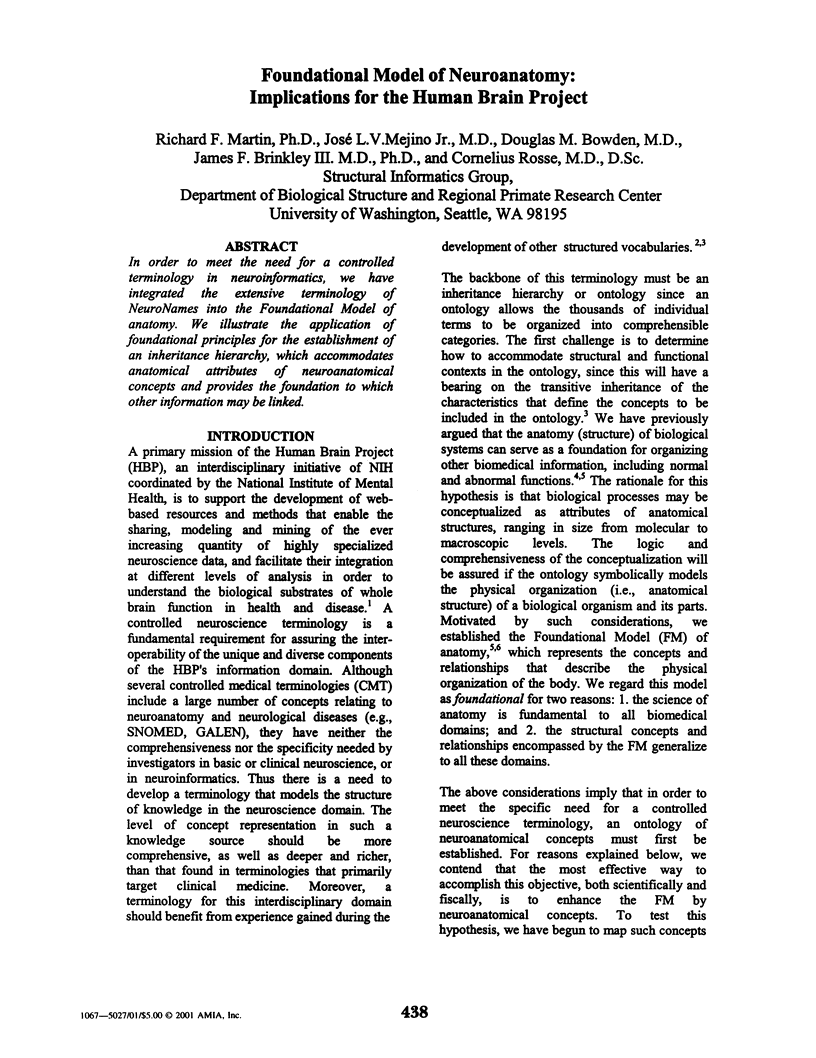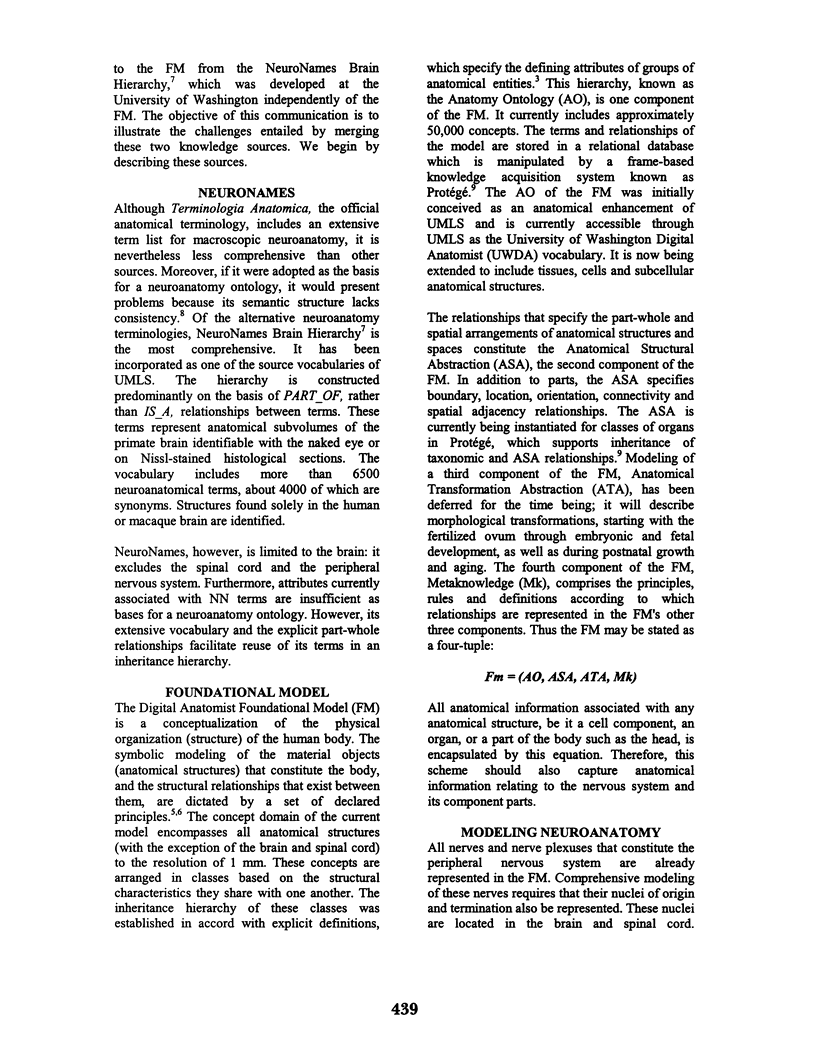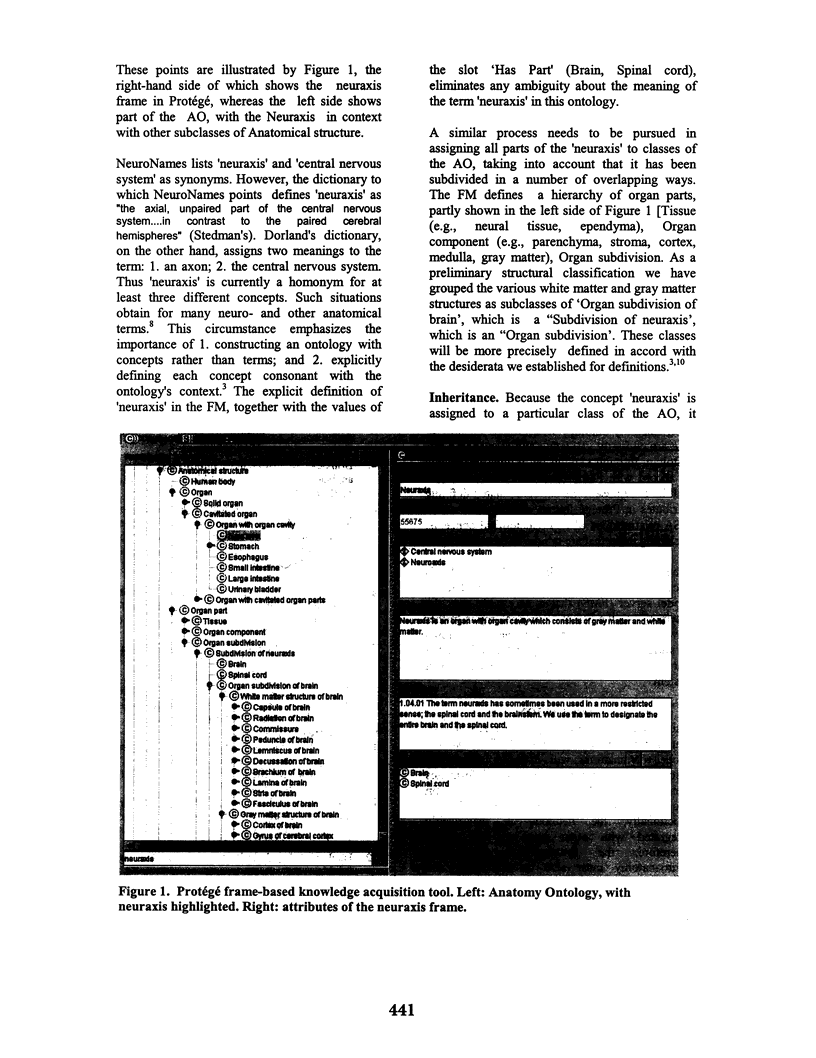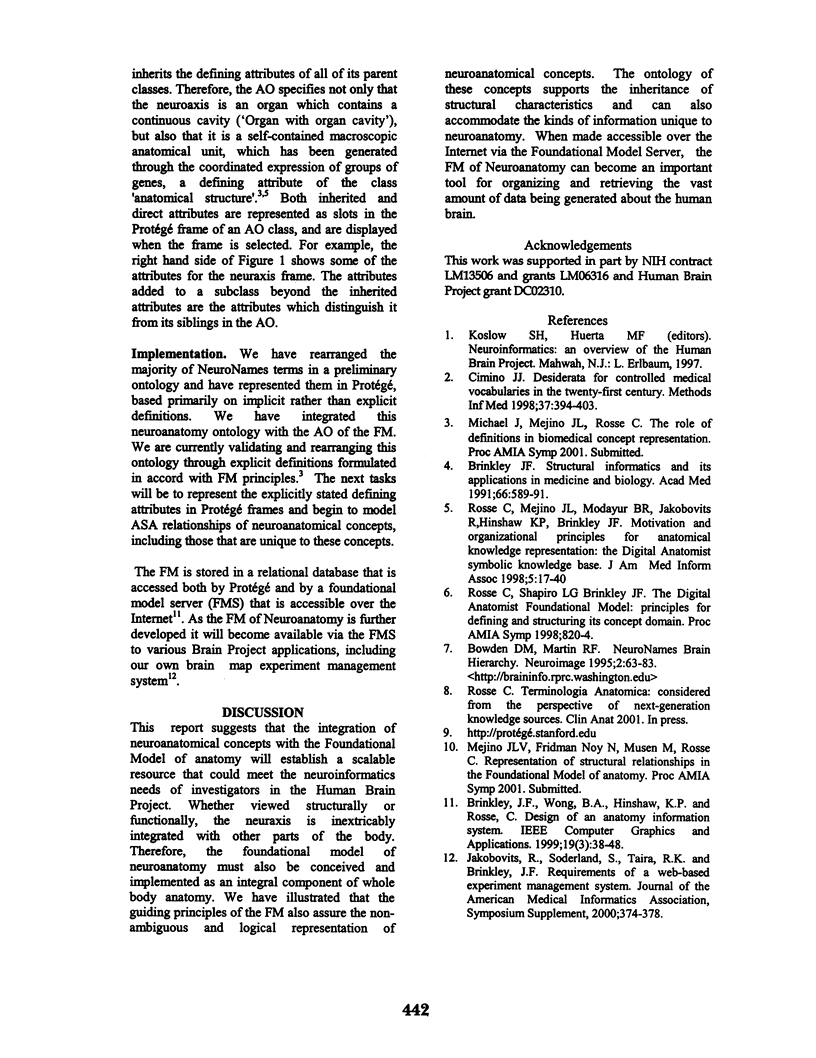Abstract
In order to meet the need for a controlled terminology in neuroinformatics, we have integrated the extensive terminology of NeuroNames into the Foundational Model of anatomy. We illustrate the application of foundational principles for the establishment of an inheritance hierarchy, which accommodates anatomical attributes of neuroanatomical concepts and provides the foundation to which other information may be linked.
Full text
PDF




Selected References
These references are in PubMed. This may not be the complete list of references from this article.
- Bowden D. M., Martin R. F. NeuroNames Brain Hierarchy. Neuroimage. 1995 Mar;2(1):63–83. doi: 10.1006/nimg.1995.1009. [DOI] [PubMed] [Google Scholar]
- Brinkley J. F. Structural informatics and its applications in medicine and biology. Acad Med. 1991 Oct;66(10):589–591. doi: 10.1097/00001888-199110000-00005. [DOI] [PubMed] [Google Scholar]
- Cimino J. J. Desiderata for controlled medical vocabularies in the twenty-first century. Methods Inf Med. 1998 Nov;37(4-5):394–403. [PMC free article] [PubMed] [Google Scholar]
- Jakobovits R., Soderland S. G., Taira R. K., Brinkley J. F. Requirements of a Web-based experiment management system. Proc AMIA Symp. 2000:374–378. [PMC free article] [PubMed] [Google Scholar]
- Rosse C., Mejino J. L., Modayur B. R., Jakobovits R., Hinshaw K. P., Brinkley J. F. Motivation and organizational principles for anatomical knowledge representation: the digital anatomist symbolic knowledge base. J Am Med Inform Assoc. 1998 Jan-Feb;5(1):17–40. doi: 10.1136/jamia.1998.0050017. [DOI] [PMC free article] [PubMed] [Google Scholar]
- Rosse C., Shapiro L. G., Brinkley J. F. The digital anatomist foundational model: principles for defining and structuring its concept domain. Proc AMIA Symp. 1998:820–824. [PMC free article] [PubMed] [Google Scholar]


